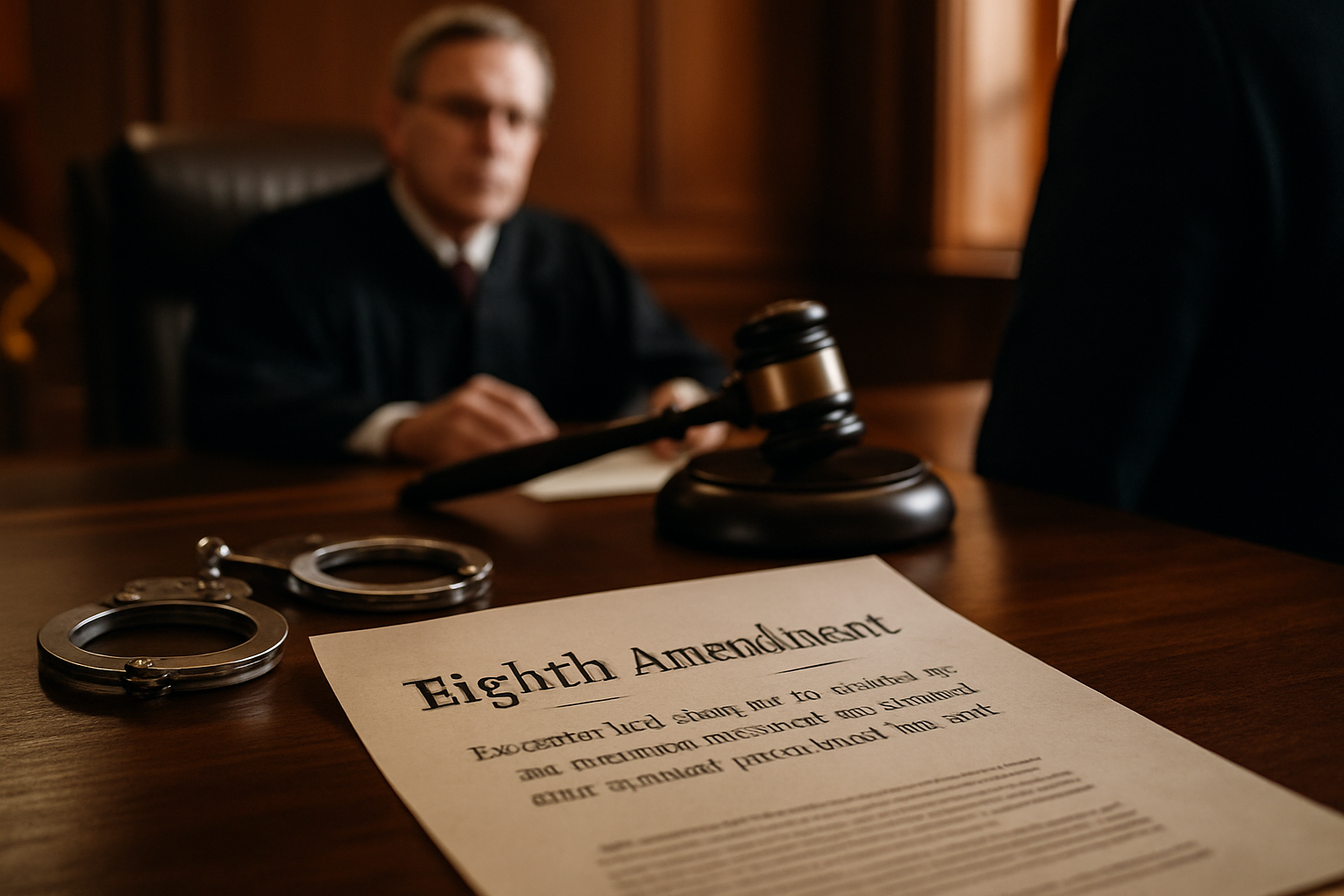The Intricacies of the Eighth Amendment: Cruel and Unusual Punishment in the Modern Era
Introduction: The Eighth Amendment of the United States Constitution, prohibiting cruel and unusual punishment, has been a subject of intense debate and interpretation. This article delves into the historical context, recent legal developments, and societal implications of this fundamental legal principle.

Historical Context of the Eighth Amendment
The Eighth Amendment, ratified in 1791 as part of the Bill of Rights, was inspired by the English Bill of Rights of 1689. Its primary purpose was to limit the power of the government in administering punishment. The phrase “cruel and unusual punishment” was intentionally left vague, allowing for interpretation and evolution over time.
Interpretation of the Eighth Amendment
The interpretation of the Eighth Amendment has evolved significantly since its inception. Initially, it was applied to punishments that were barbaric or involved torture. However, in the 20th century, the Supreme Court expanded its interpretation to include punishments that are disproportionate to the crime committed. This shift has led to significant legal debates, particularly in the context of capital punishment and life imprisonment without parole.
Recent Legal Developments
In recent years, the Supreme Court has made several landmark rulings related to the Eighth Amendment. In 2002, in Atkins v. Virginia, the Court ruled that executing individuals with intellectual disabilities violates the Eighth Amendment. In 2005, in Roper v. Simmons, the Court held that executing individuals for crimes committed under the age of 18 is unconstitutional. These rulings reflect a broader trend towards limiting the application of the death penalty.
The Eighth Amendment and Mass Incarceration
The Eighth Amendment has also been invoked in discussions about mass incarceration and prison conditions. Critics argue that overcrowded prisons, inadequate healthcare, and long-term solitary confinement constitute cruel and unusual punishment. However, courts have generally been reluctant to intervene in prison management issues, leading to ongoing debates about the role of the Eighth Amendment in addressing mass incarceration.
Societal Implications and Future Directions
The interpretation of the Eighth Amendment has profound implications for society. It shapes our understanding of justice, fairness, and the limits of state power. As societal norms and values evolve, so too will interpretations of what constitutes cruel and unusual punishment. Future legal battles will likely revolve around issues such as solitary confinement, mandatory minimum sentences, and the death penalty.
In conclusion, the Eighth Amendment, while seemingly straightforward, is a complex and evolving area of law. Its interpretation has far-reaching implications for criminal justice policy and reflects broader societal debates about punishment, justice, and human dignity. As we move forward, it will be crucial to continue scrutinizing and debating the meaning and application of this fundamental constitutional principle.





